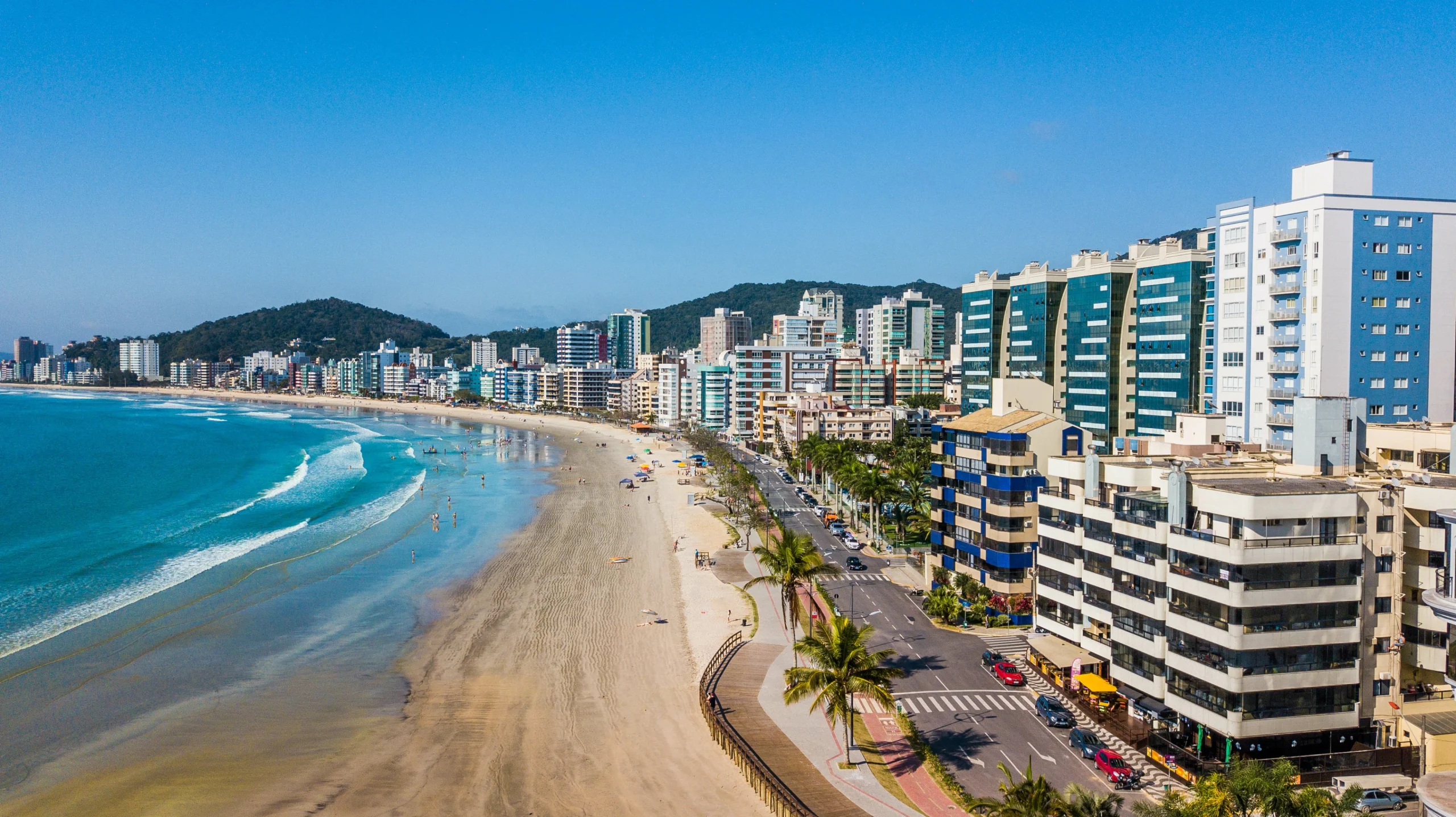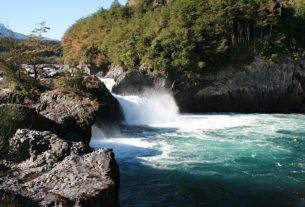The beaches are the main attraction of Itapema. Try to choose the most beautiful one among the six in the city: Central, Meia-Praia, Ilhota, Plaza, Grossa, Canto da Praia and Costão. It will be a very difficult task, but a pleasure. To help, go to Mirante do Encanto, for a panoramic view. Also visit the waterfalls in Serra dos Macacos, with incredible natural beauty hidden among the Atlantic Forest. For those who enjoy ecotourism, the mountains in the region are ideal for walking and hiking, such as Morro da Guarita, Trombudo and Encano. At the end of the tour, wander around the city’s shops to see the famous knitwear straight from the factories, the prices will please you. And don’t leave without first enjoying a tasty seafood meal, a tradition that originated in the Azores.
Encanto Viewpoint
360º view of the entire Emerald Coast. The beautiful landscape seen from Mirante do Encanto are the beaches of Itapema and Porto Belo framed by the Atlantic Ocean and white sands, in addition to the green mountains covered in native forest. Climb up and be enchanted.
At the top of the 130 meters of Morro do Cabeço, there is the Mirante do Encanto. The structure is 26 meters high, providing a 360º view of the Costa da Esmeralda, as the Itapema and Porto Belo coves are known.
There are 338 m² of built area of the viewpoint divided into 4 levels: 1st) has parking for the disabled and adapted bathrooms, in addition to the panoramic elevator. Access via stairs or ramps. 2°) has an urbanized square, playground and viewpoints at Praia da Mata de Camboriú. 3°) panoramic view of Itapema, Porto Belo and the Atlantic Ocean. 4°) a beautiful 360º view of the Emerald Coast.
Access is via Rua 109 do Canto da Praia and is open for visitors daily from 8am to 6pm. Free entrance.
Costão
An incomparable view of Itapema is offered to those who visit Costão and walk on the rocks admiring the city’s natural beauty.
Costão is one of Itapema’s postcards. Formed by native vegetation contrasting with the rounded rocks caused by the action of constant waves, the point offers a beautiful view of the other beaches in the bay. This is where Ilha do Pirata is located, which divides the beaches of Ilhota and Grossa and also offers a beautiful landscape.
Amateur fishermen are guaranteed to be present at the site, due to the ease of fishing.
Trails in the Hills
With an Atlantic Forest still preserved on the slopes of the hills, Itapema offers three beautiful spots for those who enjoy hiking: Morro da Gurita, do Trombudo and Encano.
Gurita Hill
Located 10 km from the center of Itapema, Morro da Gurita, 200 meters high, is ideal for those who enjoy ecotourism, as there are many hiking trails in the area. To get to Pico da Pedra da Gurita (678 meters above sea level) it takes about an hour and thirty minutes on a steep but moderately difficult trail. Rappelling and climbing are also practiced on this hill and the top rock serves as a ramp for free flights. A curiosity: Morro da Gurita was an observation point for the Brazilian Army during World War II, as it offers a panoramic view of the coast of Santa Catarina.
Trombudo Hill
Located 10 km from Itapema, in the bucolic community of Sertão do Trombudo, the hill of the same name is characterized by the beautiful vegetation of the Atlantic Forest. Anyone who climbs 650 meters and is lucky may see some of the region’s animals, such as armadillos, agoutis and toucans.
Morro do Encano
On the border with Balneário Camboriú, north of Itapema, is Morro do Encano, around 200 meters high. It has large stones interspersed with native forest, characteristic of the place. There is a long trail that can be walked to Balneário. It’s 2 km in total, with a steep climb at the beginning, but the view from the top is worth the effort.
Waterfalls
The other side of BR 101, which borders Itapema, reserves many natural beauties, including several waterfalls and cascades formed by the Itapema River in Serra dos Macacos. Worth knowing.
Close to rural communities in Itapema, which are located at the foot and on the slopes of the hills that surround the city, many waterfalls are attractive for those who prefer fresh water and peace to the hustle and bustle of the beaches.
The best-known waterfall is formed from the Itapema River, in Serra dos Macacos: Cachoeira Manarick, being the most frequented. Cachoeira do Sertão is located in Morro Feijó and is well looked after by the local residents. Cachoeira do São Paulinho is located in Morro São Paulo, in Barro Várzea, with easy access. All are accessible via well-maintained dirt roads and have places to leave the car. From this point there are small walking trails.
During the rainy season, the volume of water makes visiting and bathing more dangerous, so be careful. In summer and drier times, the natural pools provide relaxing and refreshing baths, amidst vegetation with beautiful bromeliads and orchids growing on the rocks due to the constant humidity of the place.
The waterfalls are located on private properties that offer guides for hiking and climbing, as well as meals and sales of typical products from the region.
Curious Points
Itapema has some interesting points spread across the city. Photo or surprise reasons are worth a stop during your stay:
Peace Square: opened on April 21, 1999, Praça da Paz is easily recognized by the large acoustic shell located there. During high season and on festive dates in the city, shows and artistic events are held in the space.
Bridge of Sighs: located north of the coast of Praia Central, on the border with Canto da Praia, the Ponte dos Suspiros is the postcard of Itapema. Built in stone, it gives the place a bucolic feel, with special lighting at night. An essential stop to photograph and admire.
Stone that Bole: 3 km from the center of Itapema, Pedra que Bole got its name because it moves according to the constantly beating sea waves. There is a local legend surrounding the point. They say that a boy from outside the country fell in love with the most beautiful girl in the village. However, the relationship was not accepted and the girl’s father injured the boy and threw him into the sea. The desperate girl threw herself together and after a few days, it was in Pedra que Bole that the embraced bodies were found. Like all legends, it is not known if it is true, but the movement of the stone is.

Sign up for our newsletter and stay up to date with exclusive news
that can transform your routine!
Warning: Undefined array key "title" in /home/storelat/public_html/wp-content/plugins/link-whisper-premium/templates/frontend/related-posts.php on line 12
Warning: Undefined array key "title_tag" in /home/storelat/public_html/wp-content/plugins/link-whisper-premium/templates/frontend/related-posts.php on line 13




